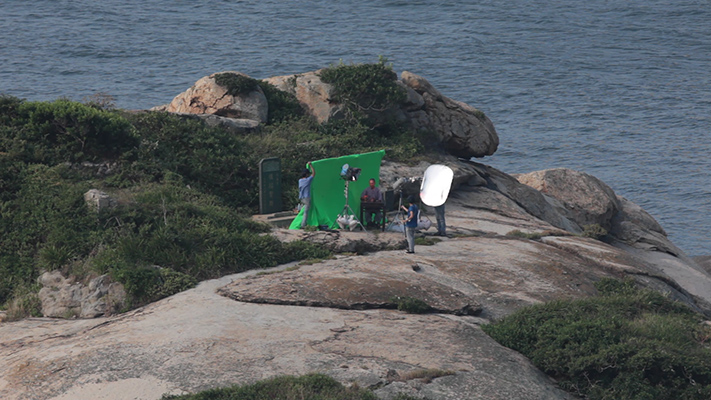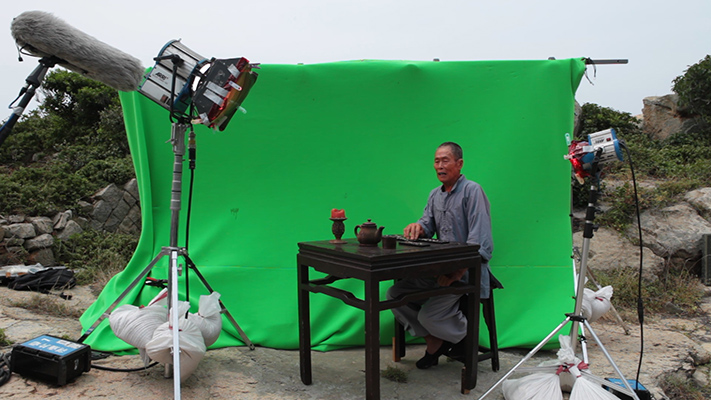Hsu Chia-Wei’s new video installation engages with the history of a tiny island off the coast of Matsu, which is situated in the Taiwan Strait. During the Qing Dynasty, the island was the site of a tiny temple. When Chiang Kai-Shek retreated to Taiwan, the temple was dismantled and relocated to a larger neighboring island, and a bunker was constructed in its place. At present, the bunker is a ruin and ownership of the island has been transferred again to the proprietors of the original temple. The island is also under the commandment of a local god called the “Ironclad Marshal,” a frog deity. This deity originated from a temple located on Wu-Yi Mountain in China, which was destroyed during the Cultural Revolution, at which point the deity migrated to Matsu.
In Hsu Chia-Wei’s work, the island is used as a stage. Employing the cinematographic device of the “green screen”—a generic background that is replaced in the post-production process with any other background image —Hsu places a fictional version of the original tiny temple on the island. Slowly, the camera zooms out and reveals that it is a montage, now showing the green screen on the island. This scenography forms the backdrop of a performance in which a local senior citizen sings a form of folk opera found only in the south of Fujian Province, recounting the experience of WWII. He is the last person capable of performing the opera, which has a long tradition and was known to be Ironclad Marshal’s favorite pastime, but which has now fallen into oblivion.
Next to the video, Hsu Chia-Wei has installed a mock-up of the tiny temple, similar to what he used for the montage in the video. It is a reassembled temple made from cinema props—the fictionalization of what the original temple might have looked like. Next to this is a letter on the wall, written by Hsu, in which he asks the Ironclad Marshal for permission for his action, lays down his vision of contemporary art’s historical agency, and shows documentation of the god’s response.
Hsu Chia-Wei, born 1983 in Taiwan, lives and works in Taipei


